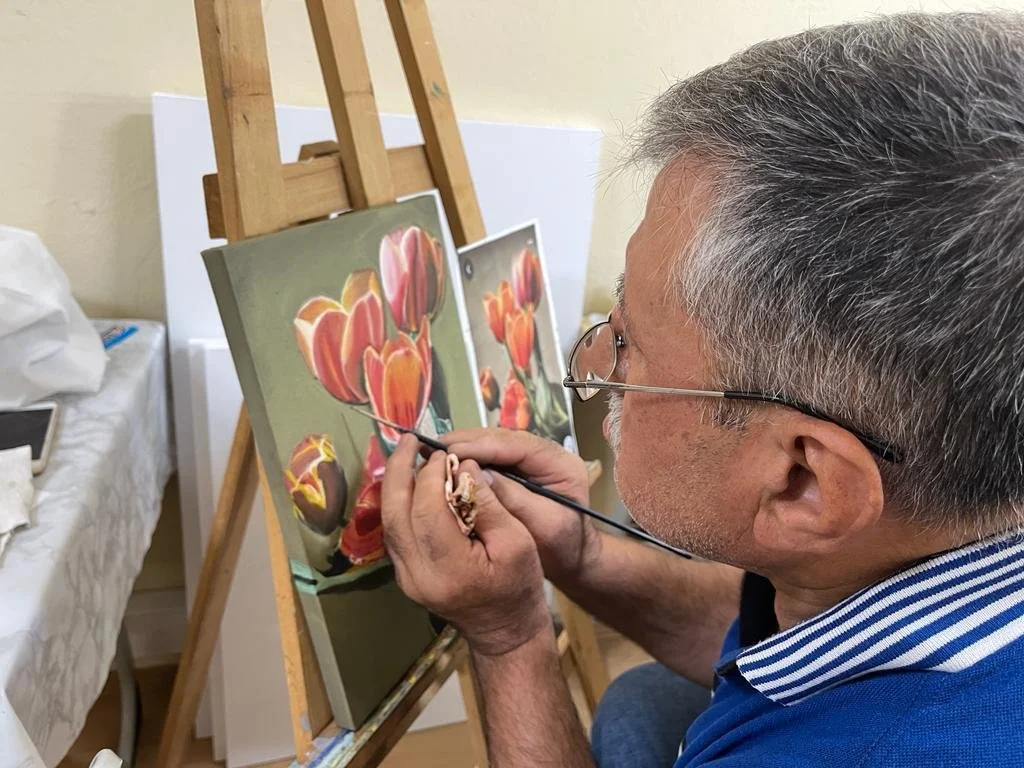
The Importance of Art Therapy in Active Aging
Aging is an intricate and inevitable process, often accompanied by physical, mental, and social changes that can present various challenges for individuals. These challenges can range from chronic illnesses and social isolation to loneliness and depression. In this context, ensuring that older adults live healthy, active, and fulfilling lives becomes paramount [1]. Art therapy, a psychosocial intervention, has emerged as a profoundly effective method to support active aging by addressing these multifaceted issues and promoting overall well-being [1].
Art therapy, formally recognized as a therapeutic practice in the 1940s, utilises various art forms - such as painting, sculpture, drama, and music - not to create "art" in a traditional sense, but as a medium for self-expression, conflict resolution, and coping mechanism development [1]. This approach allows individuals to communicate feelings, thoughts, and needs that might be difficult to articulate verbally, making it particularly beneficial for older adults experiencing functional decline or neurological disorders like Alzheimer's and dementia [1].
Engaging in creative arts, particularly painting, offers immediate and tangible benefits for both mind and body [2]. It stimulates focus, improves mental health and mood, and significantly reduces stress and anxiety [2]. The act of creating provides a profound sense of accomplishment, significantly boosting self-esteem and overall well-being [2]. For those with cognitive decline or dementia, painting helps to stir memories, encourage conversation, and evoke nonverbal expressions like smiles or laughter, facilitating unique ways to connect with caregivers and family members [2]. Research indicates that older adults who engaged in artistic activities were "73% less likely to suffer from mild cognitive impairment" leading to dementia [3].
Numerous studies highlight the significant benefits of art therapy for elderly individuals. It has been shown to provide physical relaxation, support autonomy, and increase socialisation and sharing [1]. Furthermore, art therapy can reduce functional impairment and improve self-confidence [1]. A mixed-method study revealed that visual art therapy strengthened memory, improved sleep patterns, and enhanced social engagement among elderly participants. These individuals also reported feeling empowered and discovering new talents, underscoring the therapy's role in developing self-efficacy [1]. Beyond these, art activities enhance fine motor skills and hand-eye coordination, offer sensory stimulation, and can even reduce the perception of pain [2].
Art therapy is especially effective in managing common problems prevalent among older adults. Depression, a significant concern that can exacerbate existing health conditions and lead to suicidal ideation, has been consistently shown to decrease with art therapy interventions [1]. A meta-analysis by Jenabi et al. (2022) concluded that art therapy is an effective intervention for reducing depressive symptoms in older adults [1]. Similarly, it aids in strengthening emotional management skills and fostering a sense of confidence [1]. For individuals suffering from dementia, where pharmacological options are limited, art therapy offers a valuable non-pharmacological alternative that can improve socialisation and enhance the quality of life [1]. Moreover, art therapy is a crucial intervention in combating loneliness and hopelessness, which often co-occur in older populations [1]. A study by Aydın and Kutlu (2021) demonstrated a statistically significant reduction in loneliness and hopelessness levels in older adults participating in group art therapy [1]. As a social activity, art therapy fosters a sense of belonging and connection, increasing socialization and engagement among peers [2].
Given its broad impact, art therapy is recognised as a vital nursing intervention and is included in the Nursing Intervention Classification (NIC) [1]. Nurses, working multidisciplinary with art professionals, can incorporate creative art therapy activities to elevate the quality of care provided to older adults [1].
In conclusion, art therapy serves as an invaluable non-pharmacological tool in promoting active and healthy aging. It offers profound benefits, including enhanced physical relaxation, improved sleep quality, increased autonomy, bolstered self-confidence, strengthened memory, and vital support in coping with challenging emotions such as loneliness, hopelessness, and depression [1]. When implementing art therapy, therapists should remember to be patient, encourage active participation, and create a soothing environment with elements like soft music [1]. Its holistic impact on mental, emotional, cognitive, social, and even physical well-being makes it a cornerstone in fostering a better quality of life for older adults.
Author:
Sezen Turan Yapici, Kepez İlçe Milli Eğitim Müdürlüğü
References:
[1] Düzgün, Nurcan & Demir, Satı. (2023). "A Psychosocial Touch on Elderly Individuals: Art Therapy." Journal of Gazi University Health Sciences Institute, 5(1), 18-22.
[2] McLeod, Julianna. (2025). "The Benefits of Art and Painting for Older Adults." All Seniors Care Living Centres
[3] Rosebud O. Roberts, MB, ChB, MS, Ruth H. Cha, MS, Michelle M. Mielke, PhD, Yonas E. Geda, MD, MSc, Bradley F. Boeve, MD, Mary M. Machulda, PhD, LP, David S. Knopman, MD, and Ronald C. Petersen, MD, PhD (2015). “Risk and protective factors for cognitive impairment in persons aged 85 years and older.” Neurology Journals



